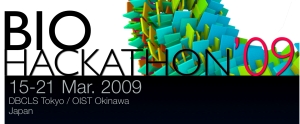Satellite meeting for Literature and Text mining related issues
Topics
Different web tools allow researchers to search literature databases and integrate semantic information extracted from text with external databases and ontologies. Some of them even provide accessible APIs so users can build their own text mining pipelines.
Enhanced literature search and retrieval engines
http://www.ihop-net.org/UniPub/iHOP/
http://www.ebi.ac.uk/citexplore/
Text mining web services
TM related web services provided by DBCLS
Collaborative annotation tools
- http://a.kazusa.or.jp/
- http://www.wired-marker.org/en/update.html
- http://www.shiftspace.org/
- http://www-tsujii.is.s.u-tokyo.ac.jp/GENIA/home/wiki.cgi?page=XConc+Suite
- Although Zotero is not though as a collaborative annotation tool (or even an annotation tool), next release (1.5) could be used for some primitive, collaborative annotations. José María has done some tests about adding notes and highlights to HTML and PDF snapshots from some articles, and it worked on first case, but not on the second one. Zotero 1.5 allows storing the information in a server, so various computers can have the same synchronized view of the same Zotero repository.
Assessment of text mining tools (both engines and web services)
BioCreative MetaServer Platform ( talk from Florian Leitner about the system)
ieXML: how to standardize the annotation of named entities
http://www.ebi.ac.uk/Rebholz-srv/IeXML/
Other stuff
http://www.ebi.ac.uk/Rebholz/resources.html
http://ex.perimental.net/scaiview/ (This shows the front-end of a text-mining system I (Tobias) developed previously. It has overlapped tagging as a result of multi-class NER and fulltext search)
Attendees
- Alberto Labarga ( EBI, Dasty, Elsevier Grand Challenge, Univ. of Granada, Spain)
- Yulia Kovarskaya
- Hong-Woo Chun
- Yasunori Yamamoto
- Tobias Gattermayer
- José María Fernández
- Pierre Lindenbaum
- Atsuko Yamaguchi
Results
- Alberto Labarga
- Hong-Woo Chun
- Introduction of Wired-Marker and XConc that are annotation tools and publicly available to use.
- We explored the use of scifoaf (Pierre Lindenbaum) -> We need unique IDs (URI) for authors in publications!
- We implemented some clients for XML-RPC interface of BCMS and iHOP webservices
- We reviewed different solutions for collaborative anotations
TODOs
- provide ieXML support for existing services
- further integration of automatic annotation in the collaborative annotation tools
Attachments
-
SatelliteLiteratureSummary.pdf
 (416.9 KB) - added by alberto.labarga
16 years ago.
(416.9 KB) - added by alberto.labarga
16 years ago.
